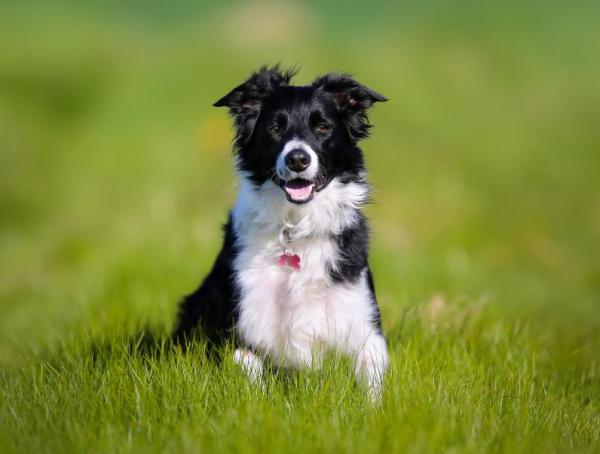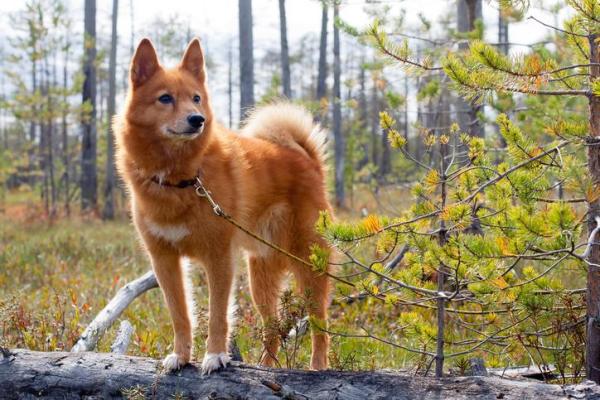The 10 Healthiest Dog Breeds



See files for Dogs
We all wish our dogs never got sick and live forever. However, the law of nature says otherwise and means they have a life cycle which will end at some point. You may want to make sure this life cycle is as long as possible by looking at dog breed which are the healthiest and, therefore, may live longer. Determining the healthiest dog breeds in the world means looking at their average life expectancies as well as finding out which ones have the least genetic predisposition to develop certain life threatening pathologies.
We must emphasize, however, there is no breed of dog which can never get sick. All dogs need to live in a positive environment with their basic needs provided. Additionally, like we humans, a dog's longevity will be improved when they have a happy life. Providing lots of love, affection and a stress free life, as best one can, will help keep them living long into their dotage. This AnimalWised list of the 10 healthiest dog breeds are those which combine a privileged natural life span, mental fortitude and are predisposed to have fewer health problems.
- Shiba inu
- Australian Cattle Dog
- Basenji
- Border Collie
- Siberian Husky
- Belgian Shepherd
- English Foxhound
- Affenpinscher
- Bichon Frise
- Finnish Spitz
- Why are some dogs healthier than others?
- Is it true that mongrel dogs are healthier?
1. Shiba inu
The Shiba Inu is a breed from the Spitz group of canines which are among the oldest in the world. They are estimated to be of Japanese origin, although some claim they originate in China or Korea. they have a compact, robust and sturdy body, with short yet abundant fur. Shiba Inu are relatively small dogs, but they strong and have a lot of fortitude which made them able to meet the challenges of a previous life in nature.
They are not without propensity towards certain illnesses and hip dysplasia and hypothyroidism are relatively common. There is a little disagreement between some authorities who claim the life expectancy is closer to 15 years of age, while some say 18. However, the case of one individual Shiba Inu called Pusuke saw this furry fella living to the ripe old age of 26 years and 9 months. This is one of the oldest known canines recorded.

2. Australian Cattle Dog
Also known as the Australian Cattleman, the Australian Cattle Dog is a medium sized dog with great strength and agility. Their well-developed muscles mean they can be effective working dogs. They come in two varieties of fur: the ‘Red Heeler’ and the ‘Blue Heeler’ with reddish or blueish tones in their coat, respectively. They get their nickname form a tendency to bite at the heels of cattle.
These animals share many aspects of charcater with the Border Collie. This means they are extremely energetic, brave and intelligent. They need adequate physical and mental stimulation if they are to stay happy and healthy. When subjected to a sedentary lifestyle, they can be constantly restless and exhibit symptoms of stress and boredom.
The longest living dog ever record (and independently verified) is a dog of this breed known as Bluey. He lived to the age of 29, however not all Australian Cattle Dogs will live close to this age. The average life expectancy for this dog is somewhere between 11 and 14 years. They may also be more likely to develop hip dysplasia, retinal atrophy and deafness, especially in older dogs.

3. Basenji
The Basenji is unique for many reasons. They are considered the oldest breed of dogs in the world, usually believed to owe to their remarkable physical strength. In ancient times, it was only the strongest animals, those best adapted to the adversities of their environment, which survived.
It is believed this dog is native to Africa, where it would have been used for hunting and tracking land prey. They achieved international fame as the ‘dog which never barks’, leading them to not only one of the healthiest dogs in the world, but the quietest. However, although they don't often bark, they aren't completely quiet and are known to emit a peculiar sound which some describe as being like a yodel.
The life expectancy of the Basenji is between 12 and 14 years. With a balanced diet, adequate exercise and proper preventative medicine, these dogs hardly ever get sick. They are very hygienic, shedding little and grooming often. Among diseases particularly common in these dogs are kidney problems (Falconi syndrome) and progressive retinal atrophy which can lead to blindness.

4. Border Collie
There is no doubt the Border Collie is a very special breed. These dogs are not merely one of the healthiest in the world, but one of the most intelligent according to the dog behaviorist Stanley Coren. They are active and faithful dogs with a great capacity for learning and remarkable agility. They also need to be adequately stimulated physically and mentally. They therefore need a correspondingly active owner.
Their are particularly long livers with a life expectancy of 14 - 17 years. Like all dogs, they need to be cared for and provided with the right veterinary treatment to reach these life spans. Hip dysplasia, epilepsy and Collie eye abnormality are potential health problems.

5. Siberian Husky
The Siberian Husky does not particularly stand out for its life expectancy which lies somewhere between 10 and 13 years. However, its excellent health and physical profile while living, do make it one of the healthiest dogs. Compared to dog breeds of similar size and shape, these husky dogs present a very low predisposition to most degenerative diseases.
Among the infrequent pathologies of this breed are ophthalmological problems such as cataracts, progressive retinal atrophy and corneal dystrophy. Some individuals may also suffer from hip dysplasia and may have a slightly greater chance of developing cancer.

6. Belgian Shepherd
The Belgian Shepherd or, perhaps more commonly, the Malinois presents a great advantage compared to most shepherd dogs. Historically, their cognitive abilities were more prized than their physical qualities and appearance. They have a particularly low predisposition to all kinds of hereditary and degenerative diseases. The only diseases with moderate occurrence are hip dyplasia, progressive retinal atrophy and corneal dystrophy.
However, we must bear in mind these furry creatures will need a high level of physical activity to remain strong and healthy. In addition to training, early socialization is essential for a long and happy life.

7. English Foxhound
The English Foxhound has many physical similarities to the Beagle. However, larger and heavier than their lookalikes, they can reach up to 60 cm in height and weigh up to 35 kg. Their coat is short, coarse and generally tricolor (white, tan and black).
This dogs are strong, yet stocky. They have strong physical endurance and a well marked character. Their life expectancy is usually calculated to be somewhere between 10 and 14 years of age. This can vary according to the lifestyle of each dog. Currently, hereditary diseases of significant incidence in the Foxhound are not well known. However, some may be affected by leukodystrophy, a rare genetic disorder which affects the nerve cells and adrenal glands.

8. Affenpinscher
This breed originates in Germany, but is not very popular outside its native country. Here it's nickname is ‘monkey dog’ due to the shape of its face. However, despite their looks, these dogs are excellent companions which are both very affectionate towards and protective over their human family.They are small dogs with a height around 24 to 28 cm and weighing around 3 to 6 kg.
Their adorable look clearly bears traits of the Terrier and their behavior is active, fun and charming. However, what is more impressive is their particularly good health. The Affenpinscher does not show great propensity towards any disease, although hip and eye problems can occur in old age. Their life expectancy varies anywhere between 12 to 15 years of age.

9. Bichon Frise
The Bichon Frise may look like a Teddy Bear, but they are actually a tough and resilient little pooch. It has a moderate tendency to become overweight, dislocate their patella and develop cataracts, especially as they advance with age. Many of these health issues, however, can be avoided with suitable diet, regular exercise and healthy habits. Their life expectancy is between 12 and 14 years.
However, this breed does require a lot of care of their coat. This is because they can create knots, with dirt and dead hair getting tangled regularly. This can increase chances of certain infections, so careful grooming and preventative medicine can help them stay healthy and prolong their lives.

10. Finnish Spitz
The Finnish Spitz is another dog which is known to be resilient to developing degenerative diseases. Some specimens may be a little more likely to develop diabetes, but this disease should be adequately prevented with the right diet and can be controlled even if it is developed. On rare occasions, especially with older dogs, they may contract hip dysplasia and Shaker syndrome.

Why are some dogs healthier than others?
Have you ever wondered why some dogs are healthier than others? There is so much history on the origins and development of so many breeds, it can be difficult to condense. We will try to give a short overview. During centuries of domestication (millennia to be more accurate) dogs were subjected to numerous instances of crossbreeding to encourage certain behavioral or physical traits and to discourage others. This is especially in terms of instinctual behavior which can make living with humans difficult.The aesthetic patterns we see in dogs are often intentional, breeders seemingly valuing adorability as much as practical traits. Unfortunately, as a byproduct, many breeds developed negative genetic characteristics or predispositions due to inbreeding.
However, we must remind you that a very important factor in a dog's longevity is their access to preventative medicine. Along with care, education and a positive environment, it keeps them away from many of the diseases which are common to canines regardless of their breeding. Dogs which have a genetic propensity towards certain diseases and conditions may need more regular checkups with veterinarians. Also, working dogs may need more attention due to increased physical activity and exposure to a broader range of environments.
To ensue your dog has the best chance at a long life, make sure their vaccination and deworming schedules are adhered to. Check ups every 6 months to a year for companion dogs and every 3 - 4 months for working dogs are recommended. Additionally, a healthy diet, careful grooming and maintaining general hygiene are very important. Also, stimulating their cognitive, emotional and social responses will help them lead a fulfilling life, so socializing and training from the beginning are important.
Is it true that mongrel dogs are healthier?
Mongrel dogs are those which are not subjected to the intense selective crossings mentioned above for pedigree dogs. This genetic diversity allows them to avoid certain genetic pitfalls which can lead to greater chances of poor health and certain diseases. For this reason, mongrel dogs tend to live longer then purebred dogs. They also tend to get sick less often.
However, it's important not to spread false myths about dogs either. Mongrel dogs aren't superheroes and they will need just as much care as any purebred, especially with medicine, exercise and love. This last point is very important. A loved dog has a much better chance of being a healthy dog. Simply put, the health of your dog will depend on your commitment to their well-being, whether pedigree or mongrel.

If you want to read similar articles to The 10 Healthiest Dog Breeds, we recommend you visit our The most... category.
















